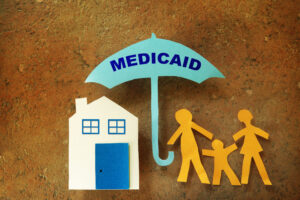Medicaid Statistics

Medicaid is a vital program in the United States, providing health coverage to millions of low-income individuals, including children, adults, pregnant women, elderly adults, and people with disabilities. Despite the program’s scale and prominence, many people seeking Medicaid are unable to receive benefits. Here are some key Medicaid statistics from recent years to provide insights and ways to navigate the system.
What is Medicaid?
Medicaid is a joint federal and state government program in the United States that provides healthcare coverage to low-income individuals and families. It was established in 1965 alongside Medicare as part of the Social Security Amendments, and it is administered by both the federal government and individual state governments. Medicaid is the largest source of health insurance coverage for low-income Americans.
Each state has its own Medicaid program, allowing flexibility in designing and managing the program. Since Medicaid is an entitlement program, individuals and families must meet the eligibility requirements before enrolling.
Who Qualifies for Medicaid?
Eligibility for Medicaid is primarily based on income and family size. Each state sets its own income limits and may have different criteria for eligibility, so the specific rules can vary from one state to another. In some cases, eligibility may also be based on factors like disability, age, and pregnancy. Children and families may also be eligible for Child Health Plus or Family Health Plus if they are not eligible for Medicaid.
In New York, for example, the general guidelines for Medicaid eligibility include: Being a resident of the state of New York, a U.S. national, a permanent resident, or legal alien, in need of health care/insurance assistance, whose financial situation can be characterized as low income or very low income. You must also be one of the following:
- Be pregnant, or
- Be responsible for a child 18 years of age or younger, or
- Blind, or
- Have a disability or a family member in your household with a disability, or
- Be 65 years of age or older.
Medicaid Enrollment
As of 2023, the total enrollment in Medicaid and the Children’s Health Insurance Program (CHIP) provides health coverage to over 90 million people in the U.S. Of those currently enrolled, about 37 million are children enrolled in Medicaid/CHIP, making up a significant portion of the beneficiaries. Approximately 27 million non-elderly adults are covered and nearly 12 million elderly and disabled individuals rely on Medicaid for their healthcare needs. With the current U.S. population being about 330 million, around one-third of U.S. residents are enrolled in Medicaid or CHIP.
In 2023, approximately 1,157,800 individuals were deemed eligible for Medicaid upon application. In New York, 827,152 individuals applied for Medicaid yet only 82,466, roughly 10% of this group, were deemed eligible for coverage.
Medicaid Spending
Total Medicaid spending reached approximately $700 billion in 2023, making it one of the largest budget items for both federal and state governments. On average, Medicaid spending per enrollee was just over $8,000 in 2023. This amount varies significantly depending on the enrollee’s category, with higher spending for the elderly and disabled.
- Medicaid is the largest payer for long-term care services in the U.S., covering about 60% of all nursing home residents.
- Special populations meeting the requirements for dual eligibility make up about 12 million people having access to both Medicare and Medicaid (dual eligibles). These individuals often have complex healthcare needs and account for a significant portion of Medicaid spending.
State Participation
As of 2023, 39 states and the District of Columbia have expanded Medicaid under the Affordable Care Act (ACA), increasing coverage to low-income adults up to 138% of the federal poverty level. The 11 states who have not adopted Medicaid expansion has resulted in a coverage gap for many low-income adults who do not qualify for Medicaid or marketplace subsidies. There is significant variability in Medicaid programs across states in terms of eligibility, benefits, and provider reimbursement rates, leading to disparities in access and quality of care.
Medicaid Impact and Challenges
Medicaid improves access to healthcare services, including preventive care, primary care, and specialty services. Enrollees are more likely to have a regular source of care and less likely to delay care due to cost. Medicaid provides critical financial protection, reducing out-of-pocket healthcare costs for low-income families and protecting them from medical debt and bankruptcy.
Research shows that Medicaid coverage is associated with improved health outcomes, particularly for vulnerable populations such as pregnant women and children. It reduces infant and child mortality rates and improves maternal health.
While Medicaid significantly improves access to care, some beneficiaries face challenges due to lower provider participation rates compared to private insurance and Medicare, largely because of lower reimbursement rates.
Conclusion
Medicaid is an essential program that plays a crucial role in the U.S. healthcare system, providing coverage and financial protection for millions of low-income and vulnerable individuals. Its impact on health outcomes and access to care is significant, though it faces ongoing challenges related to funding, state variability, and provider participation. Understanding these statistics helps illustrate the importance of Medicaid and the need for continuous support and improvement of the program.


